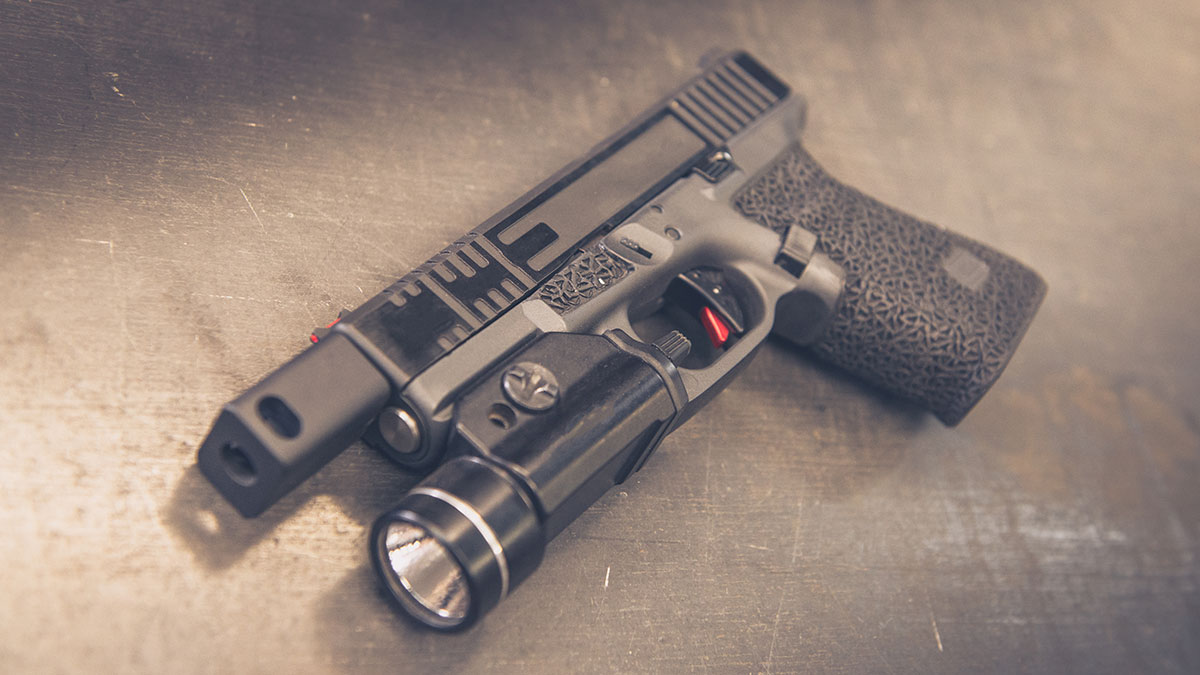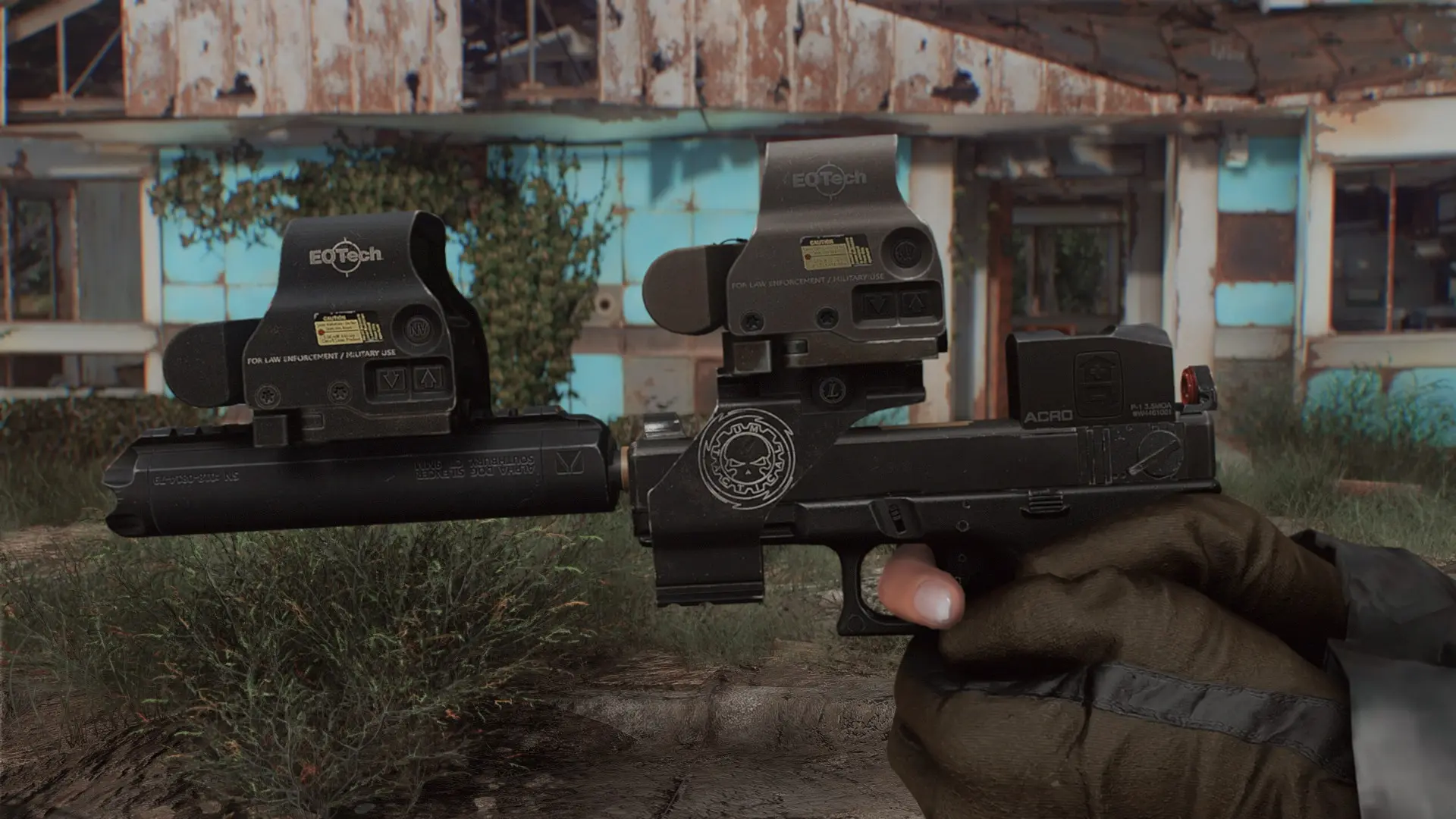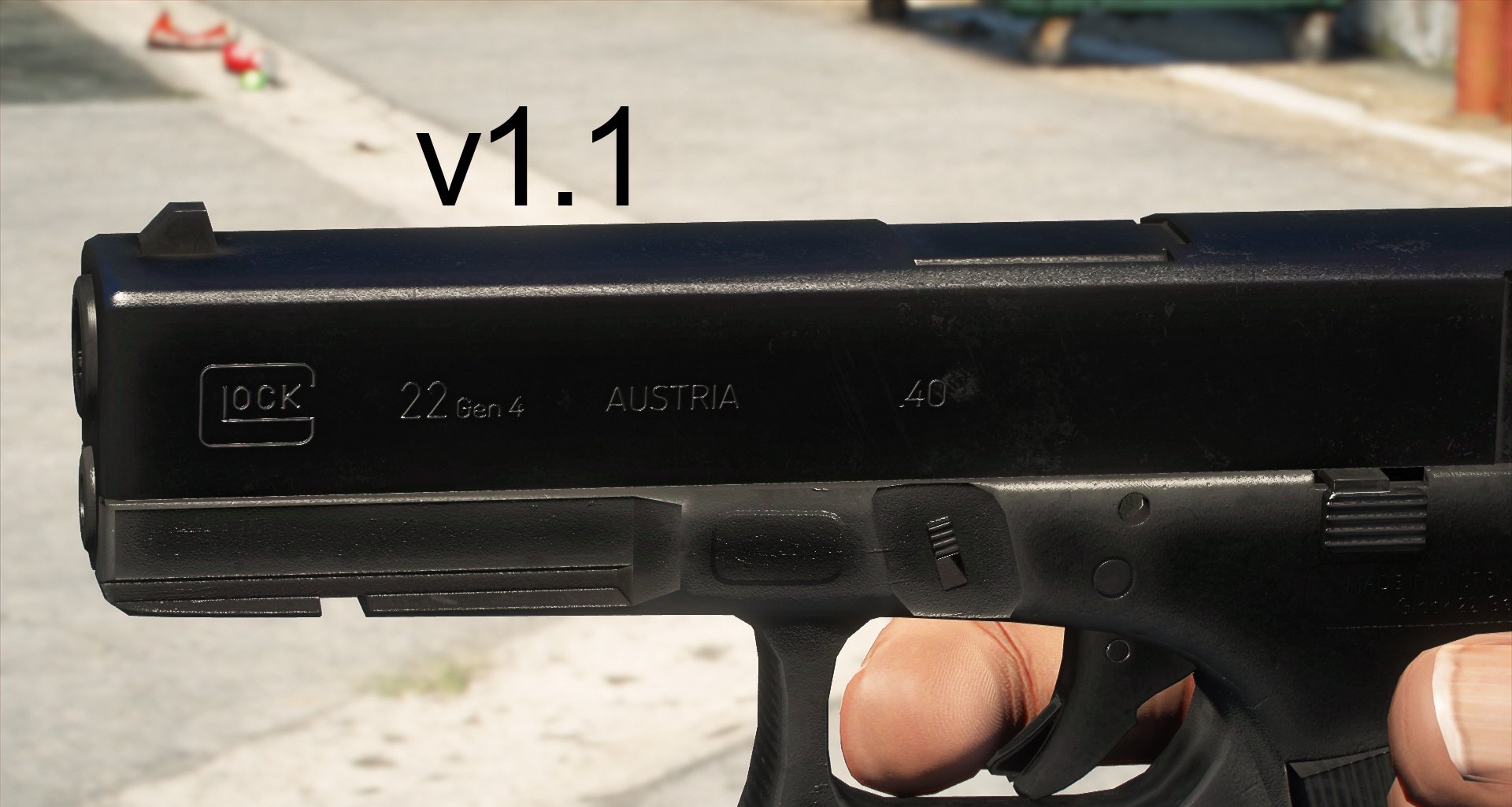Glock Assembly - There are only two types of components in a Glock pistol: those that break and those that are going to break. Despite its well-deserved reputation for being tough as nails, every component in your Glock pistol will fail at some point. If you shoot enough. Better learn how to maintain your Glock and know when and how to replace parts before one of them fails
In the last two years alone, I have fired over 70,000 rounds with Glock pistols in training and competition. I mention this fact because even though I'm an avid maintainer of Glocks, those 70K rounds (55K of them in one G19 alone) have revealed some interesting and useful maintenance issues.
Glock Assembly

In light of this experience, here I am going to share some recommendations for maintaining your Glock pistol for a long service life and a high level of reliability. Of course, nothing is certain with mechanical devices, but these steps that I will share here will ensure that you fulfill your responsibilities and do your part to mitigate destructive or life-threatening opportunities. However, be aware of one thing for sure: Your mileage may vary.
Recoil Spring Assembly (rsa) For Glock™ Pistols Archives
There are certain responsibilities associated with firearm ownership. Among them is the responsibility to keep an accurate account of each firearm you own - and - of each of its components. Unless you keep an accurate count of every item in every weapon, and act upon it when appropriate, you will suffer an inconvenient or potentially life-threatening failure when training or defending your life. No
Every time you replace a component (well before it fails), record the date and round number and then record the target round number for its next replacement. Go back and record your round count each time you fire your gun. When the count exceeds the appropriate limit for the life of a particular component, replace it and continue. We'll look at the lifetime of the component in a moment.
First of all, clean your Glock every time you shoot it. Keep this thing as clean as new and it will last a long time. Additionally, I recommend a complete disassembly detail cleaning every 2,000 rounds because I find it takes a lot of rounds to get the internals dirty enough to cause concern. As with all things in handgun maintenance, I err on the side of caution rather than pushing my luck.
My Glock 19 after 2 years and 55,000 rounds fired. So far, I have replaced the recoil spring, trigger spring, and slide stop spring several times, and replaced the extractor, magazine spring, striker spring, and cup spring once each. For a thorough cleaning, disassemble your Glock to this point and thoroughly clean all components. Make sure all components are completely dry before reassembly.
Km Tactical Glock 9mm Firing Pin Assembly
After completely disassembling the slide and frame, thoroughly clean all components and clean all cavities in the slide and frame. I recommend you
Remove the magazine catch and spring or slide lock spring except for replacement, as doing so can damage and weaken those springs.
I recommend using only dry Q-tips or other dry cleaning materials inside the striker and extractor slide holes. You don't want a slightly wet surface in your striker channel. No matter how you clean the rest of the components, be sure to dry them completely with a dry rag before reassembling them.
Among the really dirty components that need more attention are the extractor (especially the blade edge/groove), the firing pin safety, and the business end of the striker. I use edge oil wipes or a piece soaked in edge oil to dig into those areas with my fingernails to completely remove gunpowder residue.
Gun Digest Glock Assembly/disassembly Instructions Ebook By J.b. Wood
There is no way of knowing when a component will fail in any firearm. Therefore, liability requires us to replace components at the recommended intervals. It's best to replace parts before you think you need to!
Most small Glock parts are very inexpensive and I recommend always having a couple of each on hand for each of your Glocks. That way, when you fail - and if you over train at all you will - you can simply take the new alternative without having to order and wait for it to arrive.
There are a few Glock pistol components that wear out faster than others and need to be replaced regularly. These include the recoil spring assembly, trigger spring, slide lock spring and magazine spring.
The recoil spring is the backbone of your pistol. There are many ideas and choices about when to replace the rebound spring to, a) prevent cycling problems, and b) prevent the locking block pin from breaking. I recommend replacing the recoil spring on the 40 Cal and 357 Sig every 3,000 to 5,000 rounds. For .380, 9mm, .45 and 10mm, I recommend reloading every 5,000 to 10,000 rounds.
Polymer80 9mm Complete Frame Parts Kit For Glock Gen 3 Trigger Assembly
Glock factory recoil springs. I tried quite a few other things and not once did I find a non-Glock-OEM recoil spring that lasted over 1,000 rounds before breaking or starting to cause cycling problems. Many other non-OEM parts can also work well in a Glock, but I find there is no substitute for a Glock recoil spring if you are at all concerned about reliability. Here, again, your mileage may vary. Rebound spring kits typically cost anywhere from $7 to $20. You might also consider replacing the locking block pin every 30,000 to 40,000 rounds for about $3.
With a broken spring, you don't have a gun so much as a paperweight. I have never witnessed a broken spring on Glocks. I have read that one should replace the trigger spring every 10,000 rounds, which I did. I don't want to be tempted by a trigger failure, as they only cost about $2. that's cheap; Especially compared to a potentially life threatening failure.
With a broken slide lock spring, your slide will slide away from the frame. The slide lock is the mechanism you use to lower your Glock. The two protruding tabs on either side of the frame are the slide lock bezels. The all important spring sits in the frame and sometimes snaps in half. The one on my Glock 19 Gen 4 broke after 31,000 rounds (I should have replaced it earlier!). I recommend replacing the slide lock spring every 10,000 rounds or so. These fountains cost about $3.
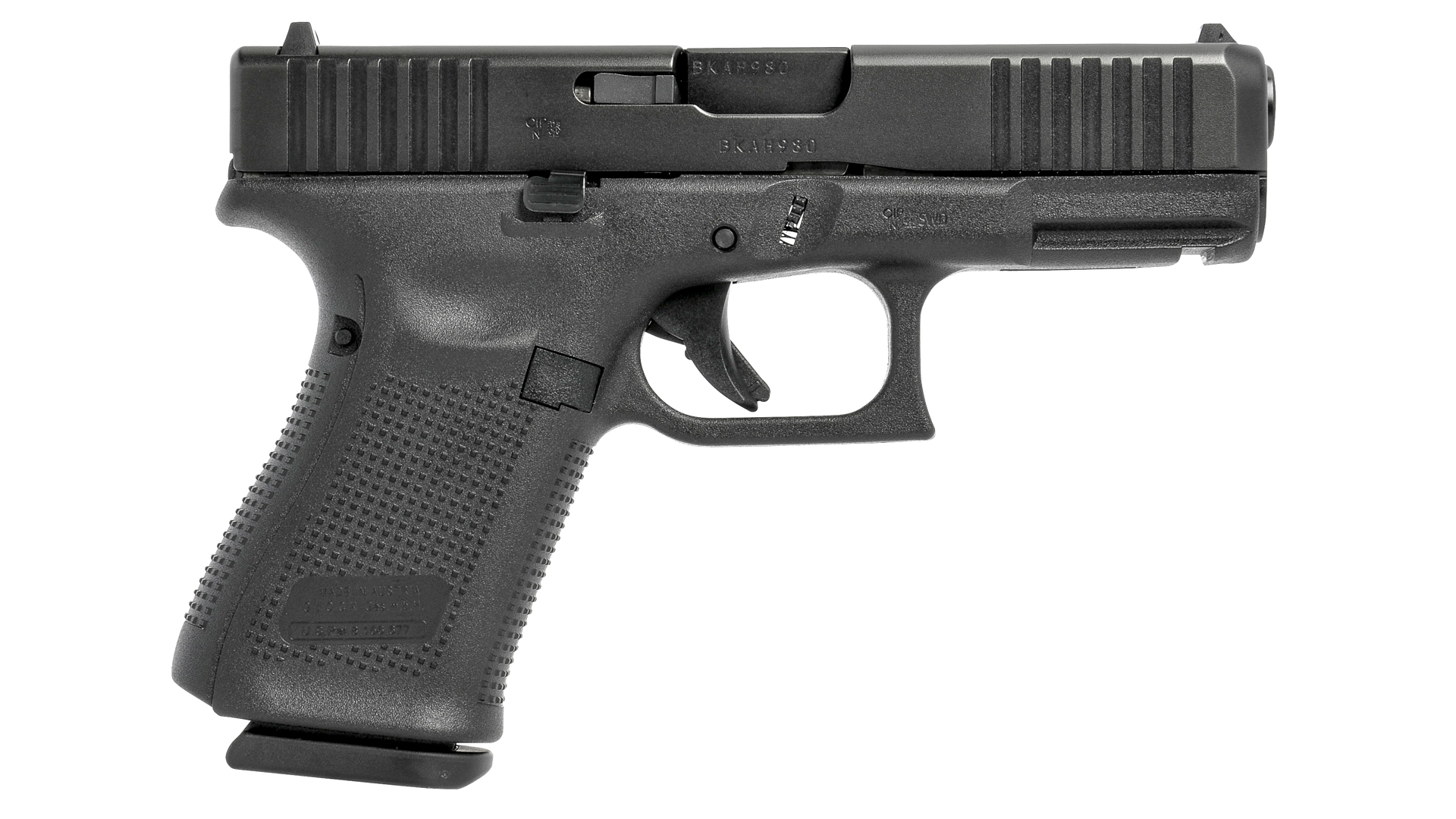
A broken magazine catch spring means your gun cannot hold a magazine, which will drop immediately. The magazine spring on the Glock 19 Gen 4 broke after 51,000 rounds. It is a spring that is sunk deep into the grip and will not need to be removed unless you change it, remove it, or replace the magazine release. I've never seen data on how often these breaks occur, but you can't run a Glock without them. Its cost is about $3. I recommend replacing every 20,000 rounds or so.
Glock 17: Complete Disassembly
I only mention it because it is not uncommon to need another one, but not necessarily due to wear and tear. I only bent the slide stop lever once, and I think it was during the first deep cleaning of my first Glock pistol. I've read that it's a common story, though.
"firing slip") the spring is not prone to failure due to firing or use, but is a delicate spring and can be flexed easily. When you disassemble your revolver, it is not uncommon for the end of the spring to catch on something and bend. It is also prone to being accidentally bent when cleaning the slide stop lever with a rag. Although it is possible to bend the spring into the correct shape, it is not likely. Do not attempt to install a new spring, but instead replace the lever and spring assembly for about $7.
I recommend replacing the striker spring and spring cups every 20,000 rounds or so, but I haven't seen any official recommendation. It is a lively spring and the spring cups are very light. These components are part of the aggressive mechanical action of every trigger pull, so wear is a factor. The spring and cups cost about $3.
The striker is apparently a lifelong component of a Glock, but I would recommend replacing it every 40,000 rounds or so. Especially if you regularly engage in dry fire practice (you do, right?).
Some Assembly Required: Pf940cv1 80% Compact Glock Frame
Yes, other parts can break, but it is these components listed above that are most susceptible to failure and require responsible attention to their condition, function and replacement from time to time.
The solid and simple construction of a Glock pistol gives it an inherent readiness to continue operating under all kinds of adverse conditions, but to keep it working for years and years and for thousands and thousands of rounds, it is better keep it as new.
In addition to the components listed here, be sure to give each of the pistol's components a quick check each time you clean it. Seat faces can crack, and rails can crack
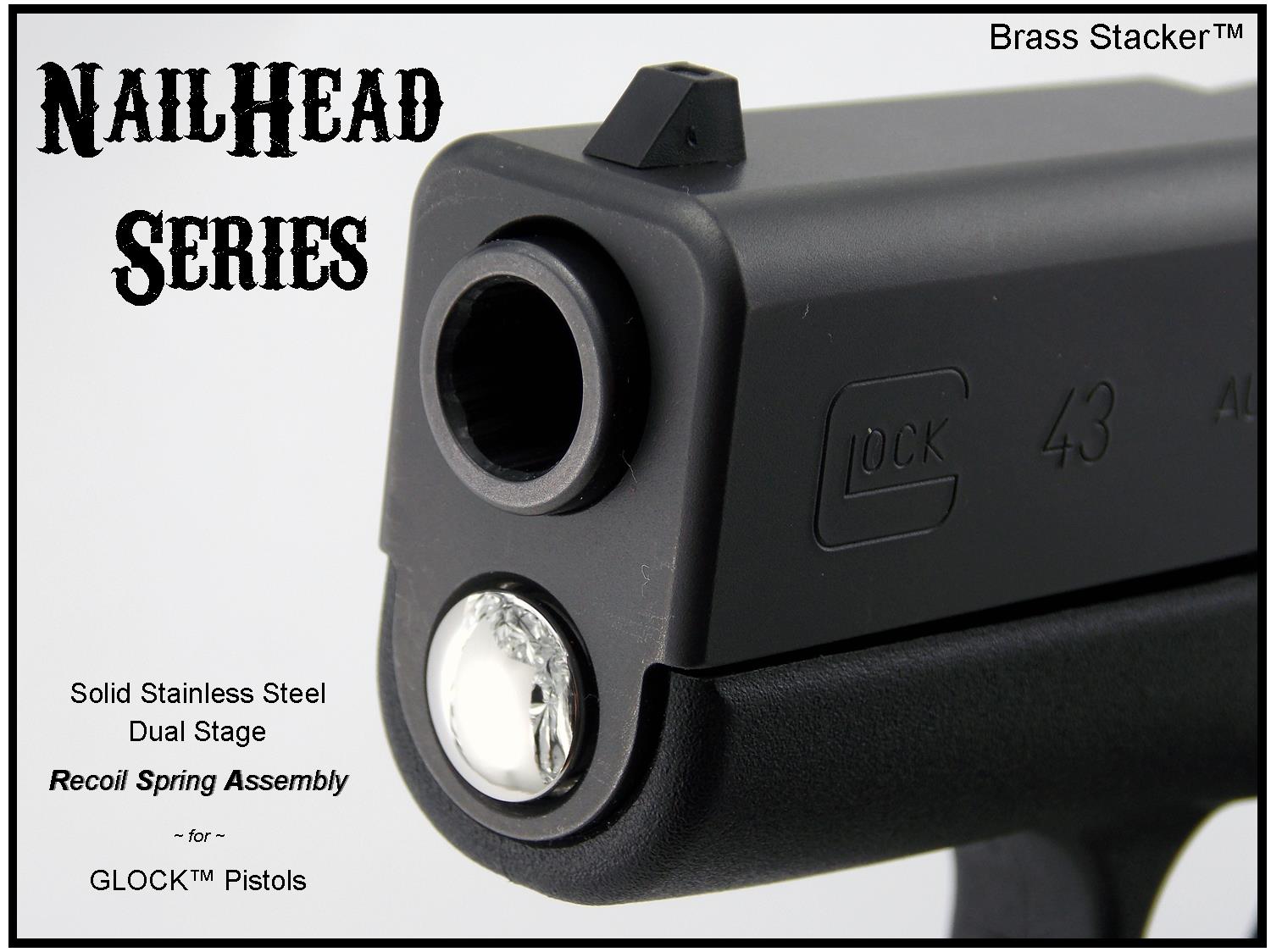
Glock 26 recoil spring assembly, glock lock, pellet glock, glock striker assembly, glock tattoo, key glock, glock 22 assembly, glock holsters, nerf glock, assembly, glock holster, glock sights
